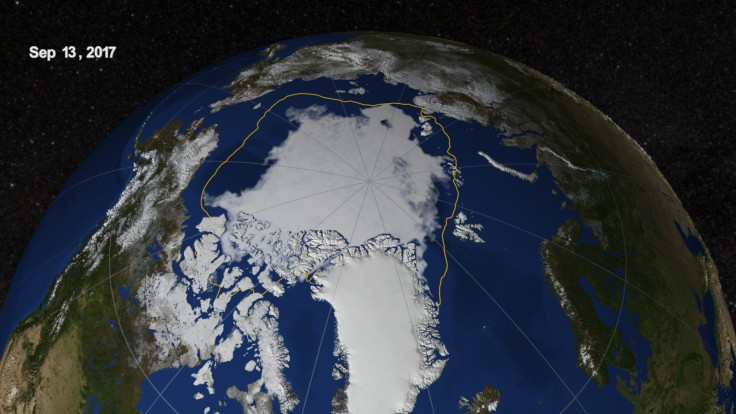Arctic ice 8th lowest on record and summer melt higher than usual, says Nasa
The melt occurred despite having summer conditions that were not unusual.

Nasa's study of Arctic icecaps has shown that this year's summer melt has been higher than average rates with the minimum ice level reached last week.
Nasa-supported National Snow and Ice Data Center (NSIDC) at the University of Colorado Boulder analysed satellite images and found that 2017's Arctic sea ice minimum is the eighth lowest since satellite records were started being kept in 1978.
According to Nasa's report on the summer melt, temperatures have been moderate through the season. In some regions, it was actually cooler than average. But the 2017 minimum ice level – the amount of ice that remains in the Arctic Ocean after the summer melt – is 1.58 million square kilometres less than the 1981-2010 average minimum.
The report points out that the ice that was formed during the previous winter in itself was particularly low. This year's summer melt reached its maximum point on 13 September. "In fact, this year, every single month from January through August experienced a new monthly record low in global sea ice extents," said Claire Parkinson, senior climate scientist at Nasa's Goddard Space Flight Center.
"How much ice is left at the end of summer in any given year depends on both the state of the ice cover earlier in the year and the weather conditions affecting the ice," she said. "The weather conditions have not been particularly noteworthy this summer. The fact that we still ended up with low sea ice extents is because the baseline ice conditions today are worse than the baseline 38 years ago," she added.
Arctic Ocean ice, according to Nasa, acts as the planet's air conditioner with its white surface bouncing a lot of the sun's energy back into space which keeps Earth cool. Arctic sea ice changes every season with the caps growing in autumn and winter, melting in spring and summer.
Certain parts of the sea ice stay completely frozen throughout the year, and the ice at lower latitudes melt and freeze in cycles. The minimum level of ice over the Arctic occurs in September and this has been increasing overall at a rapid pace, due to warming since the time Nasa has been tracking it in the 1970's.
The three years with the lowest recorded ice were a result of unusual weather. The years 2012, 2016 and 2007 all had strong summer storms. "In all of those cases, the weather conditions contributed to the reduced ice coverage. But if the exact same weather system had occurred three decades ago, it is very unlikely that it would have caused as much damage to the sea ice cover, because back then the ice was thicker and it more completely covered the region, hence making it more able to withstand storms," Parkinson said.
© Copyright IBTimes 2024. All rights reserved.





















